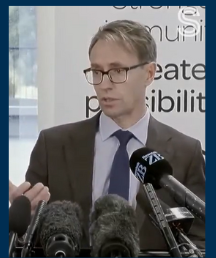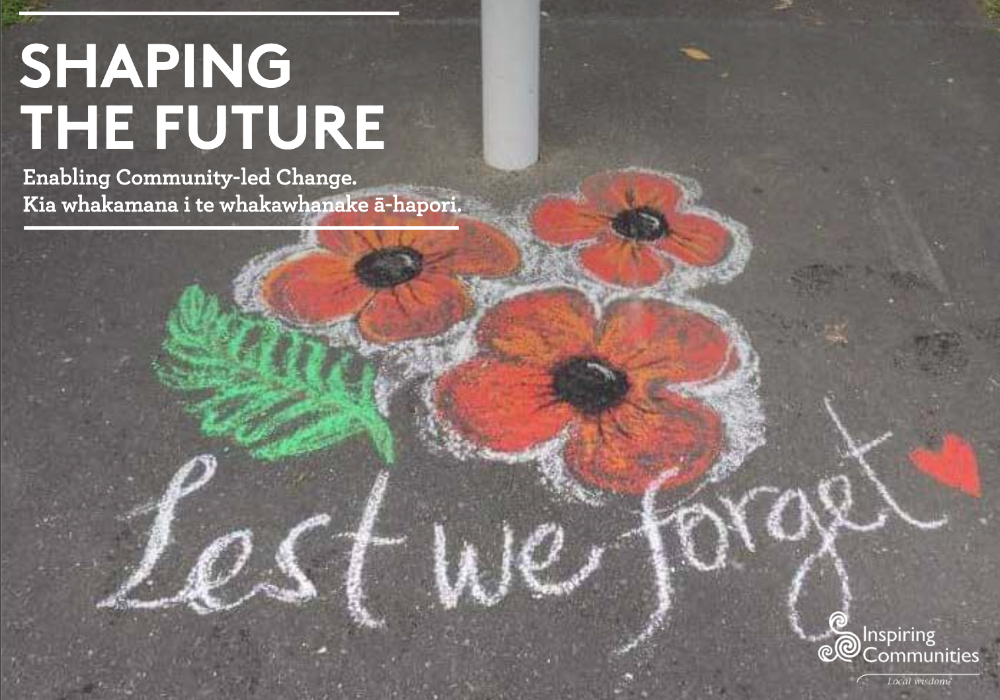




Rhetoric versus Reality
Inspiring Communities thinks it’s time to check community-led rhetoric with reality. New Zealand’s stable democracy, growing Māori economy and contributions, and relatively small size provides an ideal platform to model new Government systems. Success requires new levels of collective effort facilitated by widening conversations.
“We tend to underestimate the capability and capacity and resourcefulness of our communities – and in fact providing them with the resources and the information to get on and do the right thing, can lead to enormous success.”
ASHLEY BLOOMFIELD, FINAL MEDIA CONFERENCE AS DIRECTOR-GENERAL OF HEALTH, 27 JULY 2022

These are telling observations from a senior government official thrust into one the most challenging situations in the post war period. The Covid 19 pandemic contained a myriad of complex challenges, high levels of uncertainty and rapid change with massive and often inequitable impacts.

A ‘business as usual’ approach from Government was not going to be adequate. So, when it was required, people ran from their silos, made connections and focused on a shared purpose. Power was shared because it was the right necessary and effective thing to do. While the capacity of local communities to collaborate and self-organise was present before Covid, it came to the fore during the first national lockdown. This was well documented in Inspiring Communities Shaping the Future report, and of course that capacity remains.
The pandemic provided us with a taste of the scale of change we face with other complex issues such as the climate crisis. As Ashley Bloomfield learnt, we need to evolve government systems, so they better strengthen and support communities to respond and sustain a good and equitable quality of life. New Zealand’s stable democracy, growing Māori economy and contributions, and relatively small size provides an ideal platform to model new Government systems for other nations to learn from. Success requires new levels of collective effort facilitated by widening conversations beyond narrow party-political debates. The good news is that this shift is already happening. We all need to notice it, value it, and learn how to support its growth.
Here is one small example. Innovating Streets for People is a Waka Kotahi national initiative. In Cannons Creek Porirua, a community-led approach shaped its implementation.

It started with 15 local residents forming an “Engine Room”. They were supported with facilitation and engagement training and then helped organise and host forums to generate ideas from locals which were then worked through with Council engineers. The goal was achieved, 85% of the traffic going past the shops and nearby school now travels at less than 30km/h and the area is much safer for pedestrians and kids on bikes and scooters. The results went beyond safer more attractive streets. Capacity for local residents was strengthened, and social connections have been built that can now inform other issues the community is facing.
Makerita Makapelu from Te Hiko, who facilitated community engagement for the project says she once again observed that when you give the community the opportunity to lead, and you give them the right support, they can do it, and do it really well. Click here to read the Innovating Streets case study
As with all new approaches there were challenges to overcome, and people had to learn different ways of working. However, this small initiative is scalable. There are many more stories like this of how a national goal can achieve better outcomes when it enables local collaboration. Embedded in all these examples are critical insights that need to be highlighted and shared.
Our current government system knows about the important role of local communities. ’Community involvement’ is increasingly referred to in policy statements across many sectors. The paradox is that the system used to craft these policy documents and implement them is largely based on an old mindset of ‘how government works’. This results in cynicism as pro-community language in policies is not being matched by peoples’ experience. Eroding support for our democratic system therefore becomes a real risk. Any large-scale change will surface contradictions. It did in the Cannons Creek example, but fortunately they aren’t deal breakers. With competent coaches, and support drawn from across society, communities, organisations and the public sector, new pathways can be formed to enable new understandings of ‘being Government’ to emerge and take root.
There is no shortage of examples of how this can work – and we have seen many of these in action and review in 2022.
However, there are also examples where change is slow, in some cases harmful. There are spaces where more needs to be done to help us all solve other complex challenges which have spent too long mired in top-down mindsets and inflexible responses.
Inspiring Communities thinks it’s time to check community-led rhetoric with reality. We’re planning new research to identify and report on the public sector’s progress in enabling greater local community input. We want to explore collaborative leadership across policy domains, investment and implementation of more locally-led policy approaches. This will be a collective assessment involving a range of organisations who are independent of Government but have expertise in community-led development and social innovation. We’d love to hear from you if you have a view or would like to be part of this, please email Rachel Roberts – at rachel.roberts@inspiringcommunities.org
Blog written by David Hanna – Inspiring Communities CLD Influencing and Practice Lead & Rachel Roberts – Powerdigm Strategic Lead. November 2022
